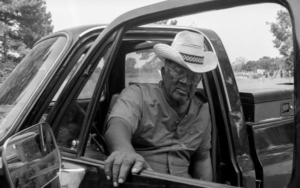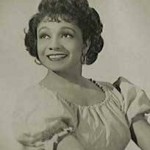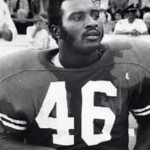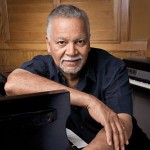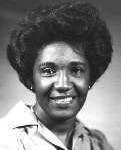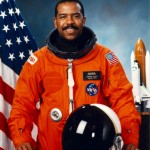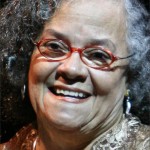The Little-Known Southern Underground Railroad Into Mexico Is an Important Piece of Black History
Image: Routes of the underground railroad
(Remezcla) In July 1863, numerous local newspapers throughout Texas reported that three enslaved Africans “stole a bale of cotton” and used the bundle to float across the Rio Grande and into neighboring Mexico, where they could escape slavery. This particular story of floating to freedom is unlikely, and logistically impossible, but countless men and women enslaved in the Lone Star State did journey to Mexico for refuge through a little-known underground railroad on the southern border.
According to Maria Hammack, a doctoral candidate at the University of Texas at Austin studying the passage of escapees who crossed the borderlands for sanctuary in Mexico, about 5,000 to 10,000 people broke free from bondage into the southern country. Currently, no reliable figures currently exist detailing how many left to Mexico, unlike the more prominent transit into Canada’s safe haven.
Freedom-seeking Blacks overwhelmingly came from Texas, but Hammack said numerous people also arrived from neighboring states.
“I have found individuals who made it all the way from North Carolina, Mississippi, Louisiana, Alabama,” Hammack told History. (more)
Telling the Story of a Texas Freedom Colony Through Decades of Photos
‘The Upshaws of County Line,’ a new book and exhibit currently at the Museum of the Big Bend, chronicles a safe haven established by African American Texans.
(Texas Monthly) What would become a decades-long relationship between photographer Richard Orton and the Upshaw family began with five simple words: “I don’t see why not.”
Thirty years ago, a friend told Orton about a black community called County Line, just twenty miles from Orton’s family home in Nacogdoches. Though he was a fifth-generation Texan, he’d never heard of the town or of the Upshaw family, who had called it home since the 1870s.
When Orton drove out to see the place in November of 1988, he didn’t have a plan. He parked under the old red oak tree in Monel and Leota Upshaw’s front lawn and asked if he could take photos of their family and learn more about the community. Without much hesitation, Monel said those fateful words: “I don’t see why not.”
Thousands of photos and countless rolls of film later, Orton has compiled his years with the family into a photo book The Upshaws of County Line: An American Family and a touring exhibit by the same name, which recently opened at the Museum of the Big Bend in Alpine and is on display through March 24. (more)
Photographic Exhibit at PVAMU
“Jasper, Texas: The Healing of a Community in Crisis”
 On the morning of June 7, 1998, the body of James Byrd, Jr. was discovered in front of an African American church near Jasper, Texas. James Byrd was the victim of a hate crime that shocked and devastated the small East Texas town.
On the morning of June 7, 1998, the body of James Byrd, Jr. was discovered in front of an African American church near Jasper, Texas. James Byrd was the victim of a hate crime that shocked and devastated the small East Texas town.
In directing viewers’ attention to lives changed by the murder, “Jasper, Texas” suggests the extent to which James Byrd, Jr.’s death was a communal tragedy for this small town in Texas. The photographs imply the way ministers used their relationships with each other and their congregations to keep the incident from becoming a catalyst for more violence.
Beginning February 1, 2019, at 8 a.m. in the John B. Coleman Library, PVAMU will present “Jasper, Texas: The Healing of a Community in Crisis,” an exhibition organized by Dr. Ricardo Ainslie in collaboration with documentary photographer Sarah Wilson and produced by Humanities Texas, the state affiliate of the National Endowment for the Humanities. The exhibit is open to the public.
For more information about viewing hours or to arrange group visits, contact the Reference and Information Services Dept. of the Coleman Library at (936) 261-1535.
TIPHC Bookshelf
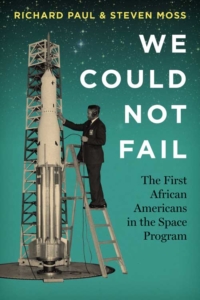 Published scholarship on black history in Texas is growing and we’d like to share with you some suggested readings, both current and past, from some of the preeminent history scholars in Texas and beyond. We invite you to take a look at our bookshelf page – including a featured selection – and check back as the list grows. A different selection will be featured each week. We welcome suggestions and reviews. This week, we offer, “We Could Not Fail, The First African Americans in the Space Program,” by Richard Paul and Steven Moss.
Published scholarship on black history in Texas is growing and we’d like to share with you some suggested readings, both current and past, from some of the preeminent history scholars in Texas and beyond. We invite you to take a look at our bookshelf page – including a featured selection – and check back as the list grows. A different selection will be featured each week. We welcome suggestions and reviews. This week, we offer, “We Could Not Fail, The First African Americans in the Space Program,” by Richard Paul and Steven Moss.
The Space Age began just as the struggle for civil rights forced Americans to confront the long and bitter legacy of slavery, discrimination, and violence against African Americans. Presidents John F. Kennedy and Lyndon Johnson utilized the space program as an agent for social change, using federal equal employment opportunity laws to open workplaces at NASA and NASA contractors to African Americans while creating thousands of research and technology jobs in the Deep South to ameliorate poverty. We Could Not Fail tells the inspiring, largely unknown story of how shooting for the stars helped to overcome segregation on earth.
Richard Paul and Steven Moss profile ten pioneer African American space workers whose stories illustrate the role NASA and the space program played in promoting civil rights. They recount how these technicians, mathematicians, engineers, and an astronaut candidate surmounted barriers to move, in some cases literally, from the cotton fields to the launching pad. The authors vividly describe what it was like to be the sole African American in a NASA workgroup and how these brave and determined men also helped to transform Southern society by integrating colleges, patenting new inventions, holding elective office, and reviving and governing defunct towns. Adding new names to the roster of civil rights heroes and a new chapter to the story of space exploration, We Could Not Fail demonstrates how African Americans broke the color barrier by competing successfully at the highest level of American intellectual and technological achievement.
This Week in Texas Black History
Jan. 31
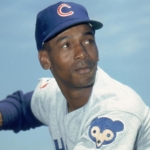 On this date in 1931, Ernie Banks was born in Dallas. Banks attended Washington High School where he was a multi-sport star. He played with the Negro Leagues’ Kansas City Monarchs before becoming the first black player for the Major League Baseball Chicago Cubs. Known as “Mr. Cub,” Banks hit more home runs than anyone else in the majors from 1955 to 1960. He was elected to the Baseball Hall of Fame in 1977.
On this date in 1931, Ernie Banks was born in Dallas. Banks attended Washington High School where he was a multi-sport star. He played with the Negro Leagues’ Kansas City Monarchs before becoming the first black player for the Major League Baseball Chicago Cubs. Known as “Mr. Cub,” Banks hit more home runs than anyone else in the majors from 1955 to 1960. He was elected to the Baseball Hall of Fame in 1977.
Jan. 31
On this date in 1934, Broadway and movie star Etta Moten (born in Weimar) sang for President and Mrs. Franklin D. Roosevelt at a White House dinner, marking the first time for an African-American woman to sing at the White House.
Jan. 31
Roosevelt Leaks, the first African-American Texas Longhorns player to earn All-America honors, was born on this day in Brenham, TX, in 1953. Leaks rushed for 2,923 yards and 26 touchdowns in his three seasons at Texas. “Rosey” was a consensus All-America selection in 1973 and finished third that year in Heisman Trophyvoting. He played nine seasons in the National Football League with the Baltimore Colts (1975-79) and Buffalo Bills (1980-83).
Feb. 1
Jazz pianist great Joe Sample was born on this day in Houston in 1939. Sample, a graduate of Phillis Wheatley High School in 1956, teamed with Wheatley classmates Wayne Henderson (trombone), Wilton Felder (saxophone), and drummer Nesbert “Stix” Hooper to form the Jazz Crusaders in the 1960s and the group became wildly successful and critically acclaimed. Sample began playing piano at age 5, and at age 16 entered Texas Southern University and studied there for three years before the Jazz Crusaders left Houston for Los Angeles to begin the group’s phenomenal career. Sample was a leader or sideman on multiple gold and platinum albums and was popular as a studio musician, including for Marvin Gaye’s “What’s Going On.”
Feb. 1
On this date in 1936, Azie Taylor was born in St. John Colony in Dale, Texas, near Austin. Taylor married James Homer Morton on May 29, 1965, and in 1977, President Jimmy Carter named her the 36th Treasurer of the United States for which she is still the only African-American to have held the position. She was a graduate of Huston-Tillotson University.
Feb. 2
In 1995, on this date, Dr. Bernard Harris, Jr. became the first African-American to walk in space. A native of Temple, Texas, Harris was payload commander aboard Space Shuttle Discovery Mission STS-63, the first flight of the joint Russian-American Space Program. The main objective of the mission was to test systems and techniques to be used on later missions to dock with the Russian Space Station Mir.
Feb. 2
On this date in 1927, musician Ernie Mae Miller was born in Austin. Miller was a graduate of L.C. Anderson High School, which was named for her grandfather. Miller played jazz, blues, gospel, and swing music and performed with the Prairie View Co-eds, a black, all-girl swing band from Texas that toured nationally during World War II. (See “Prairie View A&M University Coeds All Girl Band,” and “What if Jazz History Included the Prairie View Co-eds?” and the TIPHC Bookshelf for “Take-Off: American All-Girl Bands During World War II.”)
Blog: Ron Goodwin, Ph.D., author, PVAMU history professor
Ron Goodwin is an assistant professor of history at Prairie View A&M University. Even though he was a military “brat,” he still considers San Antonio home. Like his father and brother, Ron joined the U.S. Air Force and while enlisted received his undergraduate degree from Texas Lutheran University in Seguin, Texas. After his honorable discharge, he completed graduate degrees from Texas Southern University. Goodwin’s book, Blacks in Houston, is a pictorial history of Houston’s black community. His most recent book, Remembering the Days of Sorrow, examines the institution of slavery in Texas from the perspective of the New Deal’s Slave Narratives.
Recent Posts
Uncommon integrity
I, (NAME), do solemnly swear (or affirm) that I will support and defend the Constitution of the United States against all enemies, foreign and domestic; that I will bear true faith and allegiance to the same; and that I will obey the orders of the President of the United States and the orders of the…(more)
Democratic hypocrisy
Democracy (noun) – The belief in freedom and equality between people, or a system of government based on this belief, in which power is either held by elected representatives or directly by the people themselves. — Cambridge Dictionary Over a hundred years ago W.E.B. Dubois asked if one could be black and an American. He saw this “twoness” as perhaps the central issue affecting all Africans in America. Personally, I also feel a unique identity crisis…(more)
Submissions wanted
Historians, scholars, students, lend us your…writings. Help us produce the most comprehensive documentation ever undertaken for the African American experience in Texas. We encourage you to contribute items about people, places, events, issues, politics/legislation, sports, entertainment, religion, etc., as general entries or essays. Our documentation is wide-ranging and diverse, and you may research and write about the subject of your interest or, to start, please consult our list of suggested biographical entries and see submission guidelines. However, all topics must be approved by TIPHC editors before beginning your research/writing.
We welcome your questions or comments. Please contact Michael Hurd, Director of TIPHC, at mdhurd@pvamu.edu.

